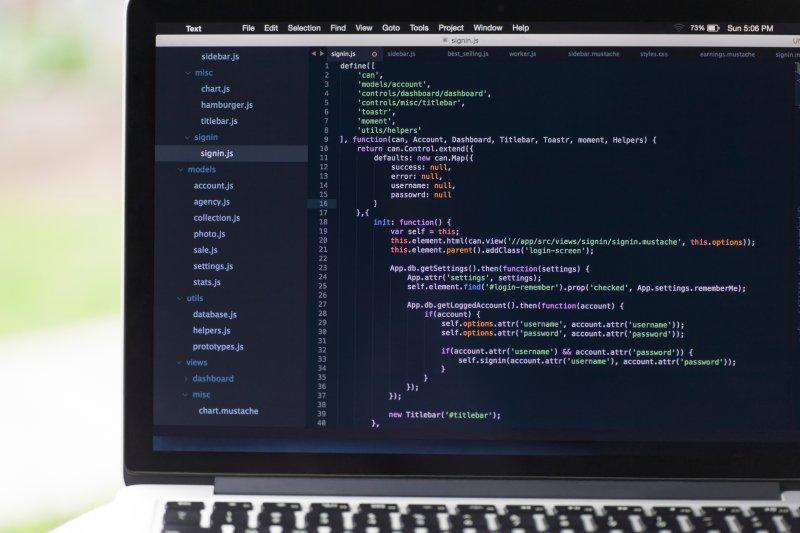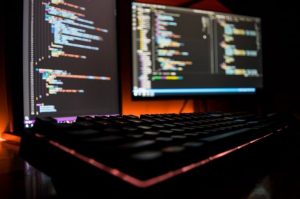The world is moving, technology is advancing, programming languages are evolving. What do you do? Stay by the wayside or join the moving train. If you are reading this introduction to python programming right now then welcome aboard. Because you just made one of the best decisions of your life. By the end of this article, you will know what python is and how it all started, applications of python and industries it is used in, benefits of python over other languages, get access to materials to help you in your python journey, and finally know why you made the best decision of your life. Sounds fun? Then let’s dive in.
How it all Started
Knowing the root helps shape your understanding of a thing so let’s begin our introduction to python programming by going back in time for a second, to look at how it all started.
Back in the ’80s before the birth of python, most programming languages were very complex and strict (they were mostly for genius and the disciplined) so, Guido Van Rossum (the inventor of python) conceived the idea of a language that would be simple and enjoyable to use and at the same time powerful, and that was how what started out as an idea transmuted to the almighty python we all use (Never underestimate the power of Ideas!).
Fun Fact:
Python was not named after the python snake but rather, after a popular show in the ’80s called The Monty Python Circus. It was named after the show to buttress the point that python language was created to be fun.
What is python and what can it do?
Python is a high level and interpreted language with easy syntax and semantics. Python is a high-level language because it doesn’t directly interact with the computer but through something called an interpreter (an engine that converts from a human-readable form to machine-readable form and executes the instructions). When compared to other languages, python has one the best language syntax because it is more human-friendly and more of a common man’s language than those of a genius but don’t be fool by the misconception – “python is just for simple tasks” but rather, it makes a task simple and a man, a mini-god (because you can create whatever you want once you understand the language).
As a general-purpose language, python can do almost everything, most of which fall into these categories:
- Web and Internet Development
- Scientific and Numeric Computing
- Desktop GUI’s
- Software Development
- Business Applications
Why Python?
Many people ask “why python?” and I ask them in return “why not python?” because it is everything but complicated. So before you are tempted to ask that question, take a glance at why you should learn python:
- It is easy to learn and implement.
- The preferred language for beginners and pros.
- An open-source language which makes it free for everyone to use.
- It can be used to do almost everything ranging from web, desktop, and mobile application development to machine learning, data analysis, and artificial intelligence. In fact, Python is the preferred language for machine learning and AI because it is so easy to implement (Don’t blame them, everyone wants the easy way out)
- It has a great library and support.
What Can You Do With Python?
Python is a tool for accomplishing real-world tasks and as a general-purpose language, its applications are virtually unlimited. All you have to do is let your imagination go wild and python will do the rest. To keep things short, here are a few things you can do with python:
- Software and Game development.
- Web, Mobile, and Desktop application development.
- Data science/AI.
- Internet scripting.
- Data mining and many more.
How Relevant is Python and Who Uses it Today?
Python is the fastest-growing language in the world in terms of its applications and has a very large user base. Getting an estimate of who uses python today is difficult because it is open-source software and that means no license registration to tally with.
Python also comes shipped with Linux distributions and Macintosh computers, making the estimate even harder to get. Judging by the python community, industries it is used in and its applications, one can conclude that it not only has a large user base but is also very relevant in today’s world. Here is just a tiny fragment of the list of Industries python is used in:
- NASA, Los Alamos, Fermilab, JPL, and others use Python for scientific programming tasks.
- JP Morgan Chase, UBS, Getco, and Citadel apply Python to financial market forecasting.
- The One Laptop Per Child (OLPC) project built its user interface and activity model in Python.
- Netflix and YouTube use machine learning with python to learn its users’ interest in shows and recommend other movies based on their interests.
- Intel, Cisco, Hewlett-Packard, Seagate, Qualcomm, and IBM use Python for hard-ware testing.
- The NSA uses Python for cryptography and intelligence analysis.
Programming Lets You Get More Done With Less Effort
No introduction to python programming would be complete without action steps. To begin programming in python, you need a python interpreter which can be downloaded from here, an Integrated Development Environment (a software for writing, debugging, and executing your code), one of my favorites is Atom and can be downloaded from here, and lots of tutorials which of course you can get from here.
Two books I recommend are: Python For Everybody by Dr. Charles R. Severance and Hands-on Python Tutorial by Dr. Andrew N. Harrington.
Python is a language that many don’t understand but you of course will begin to understand right after you take a lesson with a tutor here so don’t hesitate to find one! Good luck on your journey.
Adedayo Ajao


